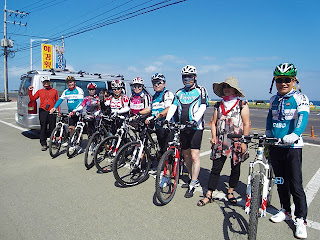 (The above photo was taken from the top of Mt. Cheolma in my neighborhood on Sunday, August 22, 2010 in the late afternoon.)
(The above photo was taken from the top of Mt. Cheolma in my neighborhood on Sunday, August 22, 2010 in the late afternoon.)People wish to be happy. Originally here in Korea, however, there was no Korean alphabet i.e. 'Hangeul' word or diction for happiness before early twentieth-century when the Chinese character word '幸福(행복)' was imported from Japan after Japanese scholars in the 19th century made the word by combining two independant Chinese character '幸(행)', which means a fortune or good luck, and '福(복)', which means a good fortune or wealth, together. (Still East Asian countries share, entirely or partly, Chinese characters in addition to their native languages, though each country, let's say Korea and Japan, pronounces the same Chinese words differently in most cases, and owe much of their cultural heritages to the characters, believe or not.)
The word 'happiness' in English is reportedly one of the words that the Japanese translators had experience a real hardship in translating it into Chinese characters, as well as introducing those western conceptions into the East Asian cultural community. A Korean alphabet word '사회', or '社會' in Chinese character, is another example.
Actually the correct meaning of the word 'happiness' in English, or 'bonheur' in French, is a 'good time allowed by the Lord or God' and, therefore, it's based on the orthodox Christian religion's concept of God. Since there was no conception or thinking of such kind in East Asia at that time, the Japanese translators had no choice but to make the Chinese character word by combining the two independant words '幸' and '福', closely related to the material wealth, with each other.
Now here in Incheon, unfortunately, the controversy over the construction of a new main stadium in Seo-gu (District) for the 2014 Asian Games still hasn't come to an end, while many of mayor Song's fellow citizens, including his enthusiastic supporters, are keeping their eyes on his final decision. It is my understanding that the most important role and/or mission of any city administrator is to strive to make everybody happy to a large extent during his tenure, notwithstanding any difficulties on the way. Particularly, in this part of the world, 'the greatest happiness (행복) of the greatest number' depends on the material wealth and prosperity.
Hopefully, mayor Song will make a right decision at the right time for all concerns, paving the way to make his mission possible and make his own people happy, as well.





